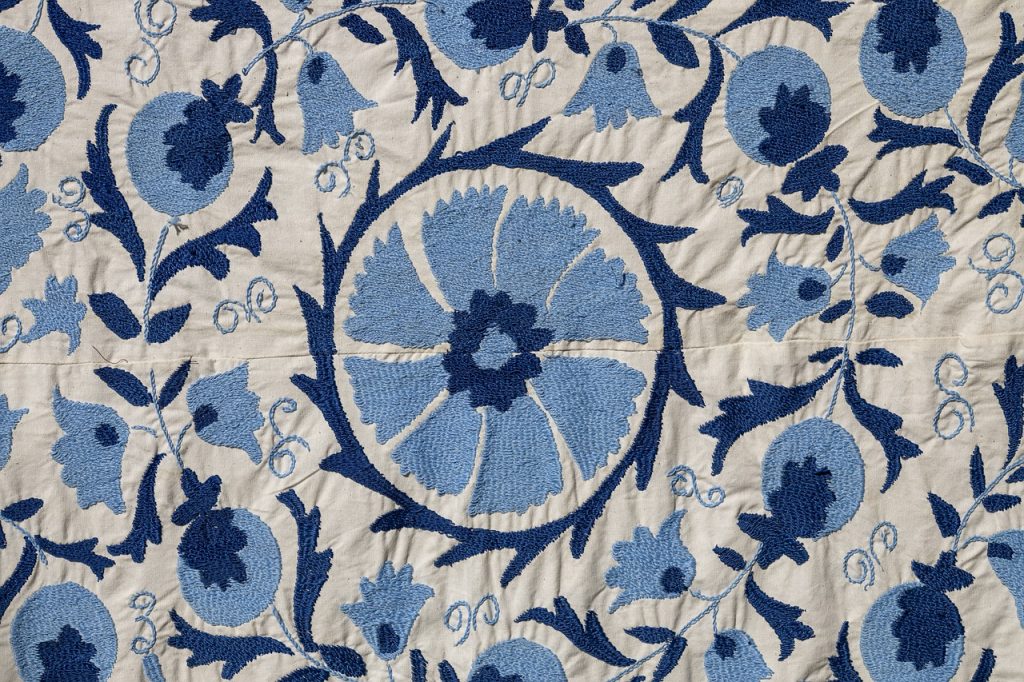Kashmir is world-famous for its handicrafts. The shawls and carpets from Kashmir are sold across India and exported to several countries. The other local crafts of Kashmir, which are popular among art collectors the world over, include works of papier mache as well as stone and wood carving. The handicrafts of the Kashmir Valley are known for their delicate work and intricate designs, and the craftsmen and artisans native to this region are renowned for the finesse in their work. Among the different traditional arts of Kashmir, is Namda. Here, we tell you about its history.
What is Namda art? Namda is a type of traditional Kashmiri felted carpet that is created using sheep wool and has colourful hand embroidery. The distinct feature of this Kashmiri craft is that wool is felted and not woven.
History of Namda Art
Namada is said to have begun in the 16th century when Mughal Emperor Akbar wanted to get a covering for his horses to protect them from the cold. The term Namda is derived from Nubi, the name of the person who came up with the idea of felted woollen carpets. It is believed that a Sufi saint named Shah-e-Hamdan introduced Kashmiris to the Namda art; he had come to the valley with the aim of creating new sources of earing for the Kashmiris.
Namda carpets and rugs are created by felting wool. Wool is spread in a thick layer over a mat, then soap water in sprinkled on it, following which the layer may be pressed using a tool called pinjra. This is followed by rolling the mat and tying it with a rope and compressing by rolling it on the floor using the hands and feet. This takes around 1 hour and lets the fibres fuse together. Then, the rope is untied and the mat is unrolled. What’s derived from this process is a plain Namda. This rug is sun-dried and later beautified with the Kashmiri Aari embroidery work.
Namda works are used by Kashmiris in the form of carpets, rugs, floor mats, and even bed covers. In Kashmir, there is a culture to sit on the floor, but as the floor gets cold during the winters, Namda rugs are of great utility to provide warmth. They are spread on the floors and are an important part of home decor. Namda works are popularly in areas such as Shehr-e-khaas, Anantnag, Rainawari and Baramulla in Kashmir. Some communities in Saurashtra buy Namda saddle blankets for their horses.
Namda has been practiced by the Pinjara and Mansuri communities and Sama Muslims in Kachchh. Although people working on this wool craft can be found across India, they are mainly seen in Rajasthan, Himachal Pradesh, and Kashmir. In the Kashmir Valley, the tradition of Namda has been passed across generations. In Srinagar, units where Namda rugs are created, are majorly found in the older parts of the city.
Namda carpets are sold in India and overseas. There was a time when they were exported on a large scale to Japan and Europe. However, there was a decline in sales when intermediaries, in the greed of profit, used low-quality fibre, which a Japanese buyer go to know, leading to a ban on Namda imports in their country.
Today, Namda is an endangered craft of Kashmir which requires efforts for its revival. One such initiative is the introduction of a machine rolling process that uses a blend of silk and wool fibres. Another initiative for the revival of Namda is the brand Incredible Kashmir Craft, a business venture by Arifa Jan from Kashmir, which she has started with the purpose of restoring the lost glory of this craft. Thus, the future for this traditional art of Kashmir looks promising, and Namda may soon regain huge popularity in the world market.



